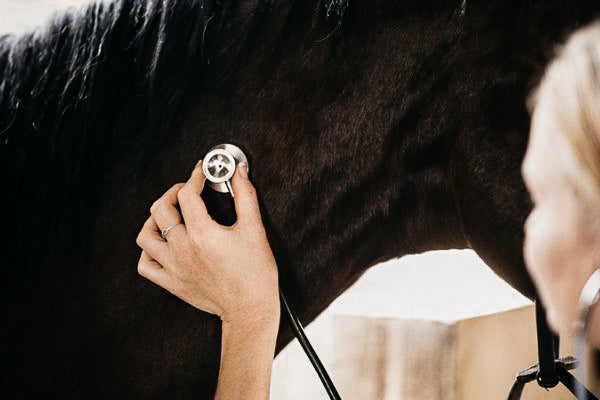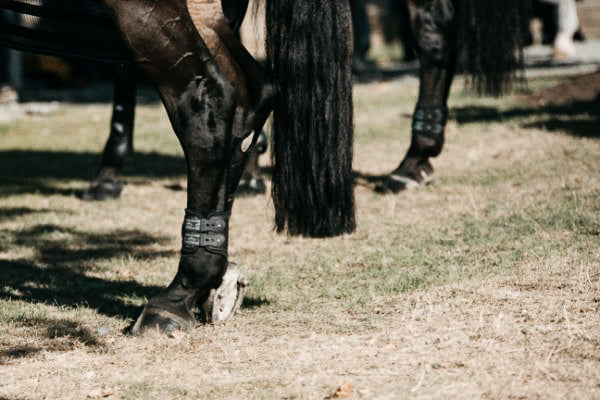
The Shetland Pony – small person, big heart
The Shetland pony is immediately associated with the term “pony”: small, sweet, cheeky and voracious. Everyone knows it and everyone likes it. But the affectionately called Shetty is not just a children's favorite. This pony also impresses with its enormous performance. It's definitely worth taking a closer look at this popular breed!
You will be amazed at the charm and ambition a Shetland pony has.

The historical origin
You will probably think that Shetland comes from the Shetland Islands of the same name. In fact, that's not entirely the case. The first traces of the horses can be found in the very north of Scotland. In Roman times, the little ones were widespread there. How they ultimately ended up in the Shetland Islands remains only a vague guess. Perhaps in ancient times they migrated over a land bridge that still existed at that time. The Pict tribe could also have brought them there by ship.
So the Shetland and Orkney Islands are not their country of origin, but they are still their home. Because these islands are rugged, rocky and have sparse vegetation, the Shetland pony remained small. They had to put up with these unreal living conditions (lots of wind & rain). Only the toughest had a chance.
Summers on the islands are short, winters are cold, foggy and wet. That's why a small amount of winter feeding takes place today in the barren winter months. Another reason for this addition: The hike that the free-roaming ponies make while looking for food is not without danger. In winter they only had the opportunity to find food (seaweed and grass) on the rugged coastline. Crevices in the rocks became a source of danger.
Breeding
Around 1870 Shetland breeding experienced a boom. The Marquis of Londonderry campaigned for the pure breeding of the little ones.
Unfortunately, there were also bad times for the pretty little ones. As pit ponies, they had to do hard work in the mining industry and often did not see daylight for the rest of their lives. Incredible: In 1931, 16 were working.000 ponies underground.
In 1890 controlled breeding was introduced (Shetland Pony Studbook Society). The first mini horses came to Germany 10 years later thanks to Hans Bongard.
First the little ones ended up in the zoo (Hagenbeck) and the circus. But the dwarves quickly found lovers.
The "Travenort" stud farm imported three Shettys and achieved the best offspring by mating first-class stallions (Tambour, Kalif and Laurin). The height at that time was 1.10 m. At times oversizes were accepted, which were used in agriculture and driving.
Today the stud book only has a size up to max. 1.07 m allowed.
Interesting: The Mini Shetland Pony was bred as a breeding form, among other things, in the royal breeding of Queen Victoria of England. They were/are even smaller. This children's pony and driving horse may only measure a maximum of 87 cm. "King size" is not always huge!

Exterior and interior of the Shetland Pony
It scores with a wide torso and strong rib curvature. His neck is relatively short, but well muscled. The head is expressive, has large eyes and a broad forehead, which is typical of a pony. The mouth is rather small with a large nostril area. Small ears are hidden under their full mane (double mane). The tail is also dense.
A broad chest with sloping shoulders and a short back are desirable. Well-muscled legs with strong joints give the Shetland pony its clear movements. It runs light-footed and takes up space. The hooves are extremely firm and have a nice, rounded shape.
According to new guidelines, all colors of fur are allowed. Only spotted tigers are excluded from breeding. The same applies to the Mini Shetland Pony.
Keeping conditions and use
Of course, the Shetty is an absolutely popular children's pony. However, it should not be overlooked that even such a small riding pony needs proper upbringing and professional training. It is small, but it is just as 100% horse as its larger counterparts. Nevertheless, its use in riding school lessons as a patient riding pony for the smallest beginners is undisputed.
No matter whether it's dressage lessons, small jumps, circus skills or the terrain - the Shetty is a fantastically powerful children's pony. The use in driving sports should be highlighted. The Shetland and the Mini Shetland Pony are the strongest horses in the world relative to their size. With almost 43% pulling power to its own weight, that's really full! Pulling a sulky, marathon wagon or sleigh is easy for these miniature horse breeds. In addition, they are very reliable and persistent in a team.
If you want to keep Shettys, you should be aware that the cuddly little guys are not cheap lawn mowers. You want to be challenged and supported. In addition, their needs in terms of feeding, care and exercise must be met. Open stable keeping is ideal. Supplementary feeding is usually hardly necessary. A Shetland pony is more than happy with rationed hay and a portioned meadow/pasture.

Unfortunately, it is not uncommon for these ponies to struggle with laminitis. As you have already learned from their origin story, they are frugal and too much grass/feed can cause significant harm to them. It's not just laminitis that could threaten the little ones. EMS or Cushing's are also an issue. That's why a breed portrait is profitable. You will find out more about your favorite animal and can find out about important things in advance. A Shetty button like this can easily live for 30 - 40 years.
So a friend for life with the heart in the right place.
Animalons brush recommendation for the Shetland pony:
For thorough care of the dense long-haired coat, we would like to recommend our Care Flex root brush to all Shetty owners. The strong natural hair bristles remove coarse dirt and grime effortlessly.
In order to do justice to the dynamic mowing of the little Shettys in terms of styling, we recommend the Mane & Tail Brush, which is distinguished by its sturdy handle and easy combing.
Discover more posts

Druse in horses – necessary information in an emergency
We all want healthy horses. But unfortunately we keep hearing about news from riding stables where diseases such as strangles have broken out. A big shock for the owners of the anima...
Continue reading
Late – the “end” for your beloved riding horse?
As long as our horses play happily in the pasture and move freely and contentedly under the rider, all is well with us. But what if our beloved riding horse starts to lame? And then she c...
Continue reading
